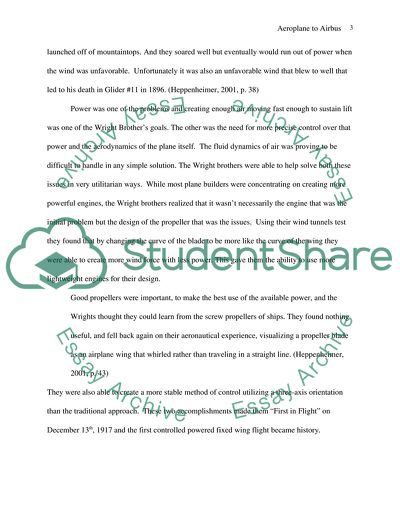History of Aviation Development Essay Example | Topics and Well Written Essays - 1500 words. https://studentshare.org/engineering-and-construction/1713917-from-wright-aeroplane-to-airbus-a380-100-years-of-aviation
History of Aviation Development Essay Example | Topics and Well Written Essays - 1500 Words. https://studentshare.org/engineering-and-construction/1713917-from-wright-aeroplane-to-airbus-a380-100-years-of-aviation.


